Ritucharya (ऋतुचर्या) – Ayurveda Recommended Seasonal Habits – Part 2

Introduction to part 2
This is part 2 of the series. Read the first part here.
A former Australian professional racer Mark Webber once quoted, “life is a cycle of ends and starts”. In the cycle of life, each and every day there is a change due to the change in the environment which consists of 4 common factors: देश (deśa, geographical area), जल (Jala, water bodies), काल (kāla, time factor) and वायु (vāyu, wind).
Acharya Charakrapani opined that there are two types of रोग (roga, diseases) occurring in the human body- साधारण (sādhāraṇa, common disease) and असाधारण (asādhāraṇa, uncommon disease). साधारण रोग is that which occurs in all beings who are exposed to the 4 common environmental factors mentioned above.
ऋतुचर्या (Ritucharya) is the remedy that is told in Ayurveda to prevent the साधारण रोग. We have covered ऋतुचर्या to be followed in उत्तरायण (uttarāyaṇa, 23 December to 22 June) in part 1 of this article, and now we will cover ऋतुचर्या in दक्षिणायन (dakṣiṇāyaṇa, 22 June to 23 December) in this second part.
What is दक्षिणायन (dakṣiṇāyaṇa)?
i.e. सौम्य/विसर्ग काल (saumya/visarga kāla)
Before we start dealing with each season, it is important for you to understand the concept दक्षिणायन (dakṣiṇāyaṇa). It is the tilt of southern hemisphere of the earth away from the sun causing the increase in बलं (immunity or strength due to seasonal effect) gradually during दक्षिणायन.
सोम (moon), अनिल (wind), वृष्टि (rain) and मेघ (clouds) having cool properties are dominant than the सूर्य (sun) having hot properties.
These cool properties cause the dominance of स्निग्ध रस (unctuous tastes) like आम्ल (sour), लवण (salty) and मधुर (sweet) in the environment, during वर्षा, शरद् and हेमन्त ऋतु respectively.
What we just talked in given in this Shloka.
आदानदुर्बले देहे पक्ता भवति दुर्बलः।
स वर्षास्वनिलादीनां दूषणैर्बाध्यते
पुनः॥
भूबाष्पान्मेघनिस्यन्दात् पाकादम्लाज्जलस्य च।
वर्षास्वग्निबले क्षीणे कुप्यन्ति
पवनादय:॥(च सू सं ६/३२-४०)
sa varṣāsvanilādīnāṃ dūṣaṇairbādhyate punaḥ॥
varṣāsvagnibale kṣīṇe kupyanti pavanādaya:॥
Ritucharya for वर्षा (varṣā, rainy season)
(Rainy season, mid-July to September)
The body is weakened at the end of आदान काल (ādāna kāla, Northern Solstice) and in the वर्षा ऋतु, the body is further weakened. Presence of water in the form of vapor in clouds leads to reduced अग्नि (Agni, digestive fire) in the body hence all the 3 दोष (doṣas) get vitiated in this season.

तस्मात् साधारणः सर्वो विधिर्वर्षासु शस्यते।
उदमन्थं दिवास्वप्नमवश्यायं नदीजलम्॥
व्यायाममातपं चैव व्यवायं चात्र वर्जयेत्।
पानभोजनसंस्कारान् प्रायः क्षौद्रान्वितान् भजेत्॥
व्यक्ताम्ललवणस्नेहं वातवर्षाकुलेऽहनि।
विशेषशीते भोक्तव्यं वर्षास्वनिलशान्तये॥
अग्निसंरक्षणवता यवगोधूमशालयः।
पुराणा जाङ्गलैर्मांसैर्भोज्या यूषैश्च संस्कृतैः॥
पिबेत् क्षौद्रान्वितं चाल्पं माध्वीकारिष्टमम्बु वा।
माहेन्द्रं तप्तशीतं वा कौपं सारसमेव वा॥
प्रघर्षोद्वर्तनस्नानगन्धमाल्यपरो भवेत्।
लघुशुद्धाम्बरः स्थानं भजेदक्लेदि वार्षिकम्॥
(च सू सं ६।३२-४०)
tasmāt sādhāraṇaḥ sarvo vidhirvarṣāsu śasyate।
udamanthaṃ divāsvapnamavaśyāyaṃ nadījalam॥
vyāyāmamātapaṃ caiva vyavāyaṃ cātra varjayet।
pānabhojanasaṃskārān prāyaḥ kṣaudrānvitān bhajet॥
vyaktāmlalavaṇasnehaṃ vātavarṣākule'hani।
viśeṣaśīte bhoktavyaṃ varṣāsvanilaśāntaye॥
agnisaṃrakṣaṇavatā yavagodhūmaśālayaḥ।
purāṇā jāṅgalairmāṃsairbhojyā yūṣaiśca saṃskṛtaiḥ॥
pibet kṣaudrānvitaṃ cālpaṃ mādhvīkāriṣṭamambu vā।
māhendraṃ taptaśītaṃ vā kaupaṃ sārasameva vā॥
pragharṣodvartanasnānagandhamālyaparo bhavet।
laghuśuddhāmbaraḥ sthānaṃ bhajedakledi vārṣikam॥
(ca sū saṃ 6।32-40)
Ahara (Diet): Use a bit of क्षौद्र (kṣaudra, honey) in drinks and food. Food dominant in आम्ल (āmla, sour taste), लवण (lavaṇa, salt) and स्निग्ध (Snigdha, unctuous) should be consumed in cold morning hours to combat vitiated वात दोष (vāta doṣa).
यव (yava, barley), गोधूम (godhūma, wheat), शालि (śāli, rice) collected and stored for 1 year are to be consumed along with यूष (yūṣa, 1 part of grains cooked in 18 parts of water).
The meat of animals from grassland can be consumed. माध्वीकारिष्ट (mādhvīkāriṣṭa, a fermented drink made of honey as the base) can be drunk in small quantity along with water to dilute it.
माहेन्द्र (māhendra, Rainwater) collected, boiled and cooled; कौप (kaupa, well water) and सारस (sārasa, lake water) can be consumed.
Vihara (lifestyle): प्रघर्ष उद्वर्तन (pragharṣa udvartana, the act of rubbing dry medicated powder during bath), स्नान (snāna, bathing), गन्धमाल्य (gandhamālya, applying medicated drugs as a paste over body after bath) are to be done daily during this season.
To be avoided: Drinking cold juices, sleeping during day time, drinking river water, exposing to sunlight for a longer time and sexual intercourse.
Research: Honey collected in
rainy and dry seasons were compared for their anti-fungal and
antioxidant effect. It
was found that honey collected in the rainy season had more anti-fungal and antioxidant
activity that collected in the dry season. Hence this may be one of the reasons for using
honey in rainy season as fungal infections are more during this season
Cold juices aggravate doshas, sleep during day time causes Kapha and Pitta aggravation. Exercise and sexual intercourse lead to Vata aggravation since the body is weaker in this season.

Bring Sanskrit home!
ReSanskrit merchandise starting at ₹ 199.
Browse
Collection!
Ritucharya for शरद् (Sharad, Autumn)
(Autumn season, mid- September to mid – November)
Human body and earth which were once cooled due to rain in वर्षा (varṣā, rainy season) will be heated again by sun rays in Sharad Ritu causing vitiation of Pitta Dosha.

तत्रान्नपानं मधुरं लघु शीतं सतिक्तकम्।
पित्तप्रशमनं सेव्यं मात्रया
सुप्रकाङ्क्षितैः॥
शालीन् सयवगोधूमान् सेव्यानाहुर्घनात्यये।
तिक्तस्य सर्पिषः पानं विरेको रक्तमोक्षणम्॥
धाराधरात्यये कार्यमातपस्य च वर्जनम्।
वसां तैलमवश्यायमौदकानूपमामिषम्॥
क्षारं दधि दिवास्वप्नं प्राग्वातं चात्र वर्जयेत्।
दिवा सूर्यांशुसन्तप्तं निशि चन्द्रांशुशीतलम्॥
कालेन पक्वं निर्दोषमगस्त्येनाविषीकृतम्।
हंसोदकमिति ख्यातं शारदं विमलं शुचि॥
स्नानपानावगाहेषु हितमम्बु यथाऽमृतम्।
शारदानि च माल्यानि वासांसि विमलानि च॥
रत्काले प्रशस्यन्ते प्रदोषे चेन्दुरश्मयः॥
(च सं सू ६।४०-४८)
tatrānnapānaṃ madhuraṃ laghu śītaṃ satiktakam।
pittapraśamanaṃ sevyaṃ mātrayā
suprakāṅkṣitaiḥ॥
śālīn sayavagodhūmān sevyānāhurghanātyaye।
tiktasya sarpiṣaḥ pānaṃ vireko raktamokṣaṇam॥
dhārādharātyaye kāryamātapasya ca varjanam।
vasāṃ tailamavaśyāyamaudakānūpamāmiṣam॥
kṣāraṃ dadhi divāsvapnaṃ prāgvātaṃ cātra varjayet।
divā sūryāṃśusantaptaṃ niśi candrāṃśuśītalam॥
kālena pakvaṃ nirdoṣamagastyenāviṣīkṛtam।
haṃsodakamiti khyātaṃ śāradaṃ vimalaṃ śuci॥
snānapānāvagāheṣu hitamambu yathā'mṛtam।
śāradāni ca mālyāni vāsāṃsi vimalāni ca॥
ratkāle praśasyante pradoṣe cenduraśmayaḥ॥
(ca saṃ sū 6।40-48)
Ahara (Diet): Food dominant in मधुरं (sweet taste), लघु (light to digest), शीतं (cooling), तिक्त (bitter taste) properties bringing normalcy in पित्त dosha should be consumed in proper मात्र (quantity). शाली (rice). यव (barley) and गोधूमा (wheat) to be consumed.
In this season, one must consume the water which is heated by the sun rays and cooled by the moon rays at night and this water is called हंसोदक (haṃsodaka). This water can be used for drinking, bathing and washing clothes.
Vihara (lifestyle): Undergoing विरेचन (virecana, therapeutic purgation), रक्तमोक्षण (raktamokṣaṇa, bloodletting procedure) and consuming तिक्त सर्पि (tikta sarpi, bitter medicated ghee) are to be consumed. Exposure to moon rays during night time is helpful in this season.
To be avoided: Exposure to sun rays when the sun is at its peak. Consuming meat of animals from marshy land, क्षारं (kṣāraṃ, alkaline drinks or substances), दही (dahī, curd), दिवास्वप्न (divāsvapna, day time sleeping) and प्राग्वात (prāgvāta, exposure to winds) are to be avoided.
Solar water disinfection is one of the easiest and effective methods to disinfect water.
In this method, water is exposed to sun rays for some time which leads to the destruction of the cell structure of pathogens and activation of oxygen in water leading to the formation of hydrogen peroxide which kills pathogens.
Which type of Lepa (Face pack) can be applied in each Ritu?
कुंकुमं चन्दनं चापि क्रुष्णागुरु विमिश्रितं।
उष्णं वातकफध्वंसि शीतकाले तदिष्यते॥
चन्दनं घनसारेण बालकेन च मिश्रितं।
सुगन्धि परं शीतमुष्णकाले प्रशस्यते॥
चन्दनं घुस्रुणोपेतं म्रुगनाभिसमायुतं।
न च उष्णं न च शीतं वा वर्षाकाले तदिष्यते॥
(योगरत्नाकर नित्याप्रव्रुत्तिकार: ८५-८७)
kuṃkumaṃ candanaṃ cāpi kruṣṇāguru vimiśritaṃ।
uṣṇaṃ vātakaphadhvaṃsi śītakāle
tadiṣyate॥
candanaṃ ghanasāreṇa bālakena ca miśritaṃ।
sugandhi paraṃ śītamuṣṇakāle praśasyate॥
candanaṃ ghusruṇopetaṃ mruganābhisamāyutaṃ।
na ca uṣṇaṃ na ca śītaṃ vā varṣākāle tadiṣyate॥
(yogaratnākara nityāpravruttikāra: 85-87)
| Ritu | Lepa (face pack) | Reason |
|---|---|---|
| शीतकाल (हेमन्त, शिशिर) Cooler period (early and late winter) |
केशर (saffron), चन्दन (sandalwood powder), कृष्ण अगुरु (Agarwood powder) |
Hotter effect for cold season |
| उष्णकाल (वसन्त,ग्रीष्म,शरद्) Hotter period (Spring, Summer, and Autumn) |
सुगन्धबाला(fragrant Pavonia root powder), केशर (saffron), चन्दन (sandalwood powder) |
Cooling effect for hot season |
| वर्षा (Rainy season) | म्रुगनाभि (musk powder), केशर (saffron), चन्दन (sandalwood powder) |
Neither hot nor cold, a balanced effect for rainy season |
Reason: Kesar is found to have anti-inflammatory and
anti-oxidant effects in humans.
Agarwood has antipyretic, anti-inflammatory and
analgesic effects.
Musk is also having anti-inflammatory activity.
What colored clothes one should wear in each Ritu?
कौशेयं चित्रवस्त्रं च रक्तवस्त्रं तथैव च।
वातश्लेष्महरं तत्तु शीतकाले
विधारयेत्॥
मेध्यं सुशीतं पित्तघ्नं काषायं वस्त्रमुच्यते।
तद्धारयेत् उष्णकाले तच्चापि लघु शस्यते॥
शुक्लं तु शुभदं वस्त्रं शीतातपनिवारणं।
न च उष्णं न च शीतं तच्च वर्षासु धारयेत्॥
योगरत्नाकर नित्याप्रव्रुत्तिकार: ८०-८२)
kauśeyaṃ citravastraṃ ca raktavastraṃ tathaiva ca।
vātaśleṣmaharaṃ tattu śītakāle
vidhārayet॥
medhyaṃ suśītaṃ pittaghnaṃ kāṣāyaṃ vastramucyate।
taddhārayet uṣṇakāle taccāpi laghu śasyate॥
śuklaṃ tu śubhadaṃ vastraṃ śītātapanivāraṇaṃ।
na ca uṣṇaṃ na ca śītaṃ tacca varṣāsu dhārayet॥
yogaratnākara nityāpravruttikāra: 80-82)
| Ritu | Cloth Color | Reason |
|---|---|---|
| शीतकाल (हेमन्त, शिशिर) Cooler period (early and late winter) |
कौशेयं (silk), चित्रवस्त्रं (colorful), रक्तवस्त्रं (red color) |
It pacifies Vata and Kapha Dosha aggravated in this season |
| उष्णकाल (वसन्त,ग्रीष्म,शरद्) Hotter period (Spring, Summer, and Autumn) |
काषायं (brownish red) |
It promotes memory, it pacifies Pitta Dosha and has a cooling in effect |
| वर्षा (Rainy season) | शुक्लं (white) |
White is an auspicious color, it prevents too much exposure to cold winds and sunrays, white not cooling nor hot in effect. |
Reason: Colors affect mind and body.
White color influences the
imagination in a positive way also calms one’s body and mind; this is one of the reasons why white color
clothes are adviced to be worn in the Varsha Ritu when there is the least strength.
Yellow color alleviates constipation. Orange color stimulates oxygenation and normalizes metabolism. Blue color calms and induces sleep.
Red color stimulates activities in an individual, to normalize aggravated Kapha dosha in winter when the strength is high, one needs to be active.
Conclusion
Ritucharya in Ayurveda is preventive measures of bodily diseases via diet and regimen, improving mental health by simple means like color coding of clothes we wear, face packs we apply and many more like these.
It would be appropriate to say that no aspect of health is left unexplored in Ritucharya. If one tries to follow what has been said in Ayurveda, one can surely be leading to a path of sound body and a sound mind.
What's next? Read our article on 10 Habits for great health in Sanskrit according to Ayurveda!



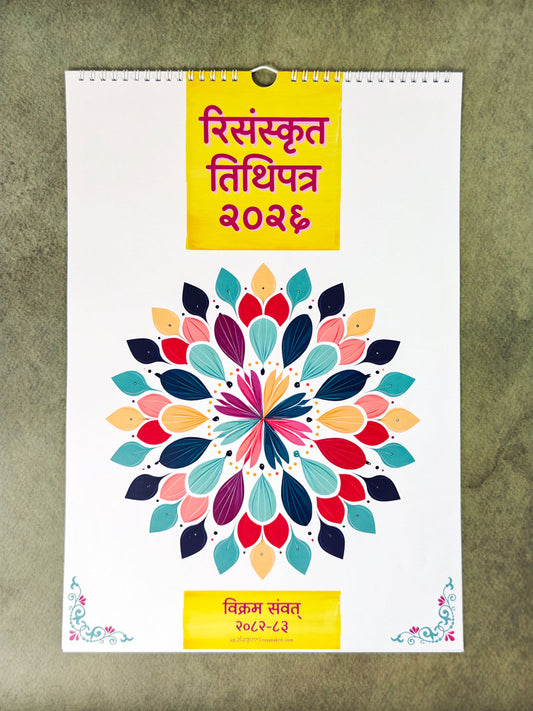

![[New Edition] ReSanskrit® 365 Days of Sanskrit Wisdom | Daily Sanskrit Quotes | With 100+ New Quotes, Hindi & English Translations🆕](http://resanskrit.myshopify.com/cdn/shop/files/365-calendar-resanskrit-front-hero-shot_533x.jpg?v=1762351171)
![[New Edition] ReSanskrit® 365 Days of Sanskrit Wisdom | Daily Sanskrit Quotes | With 100+ New Quotes, Hindi & English Translations🆕](http://resanskrit.myshopify.com/cdn/shop/files/365-calendar-resanskrit-quote-shot1_533x.jpg?v=1762351193)

![[Please Read Note] 2025 - Hindu Wall Calendar (Vikram Samvat 2081-82) - ReSanskrit](http://resanskrit.myshopify.com/cdn/shop/files/Month-image_3_533x.jpg?v=1738386056)
![[Please Read Note] 2025 - Hindu Wall Calendar (Vikram Samvat 2081-82) - ReSanskrit](http://resanskrit.myshopify.com/cdn/shop/files/Hero-image_1_withmessage_533x.jpg?v=1738386056)
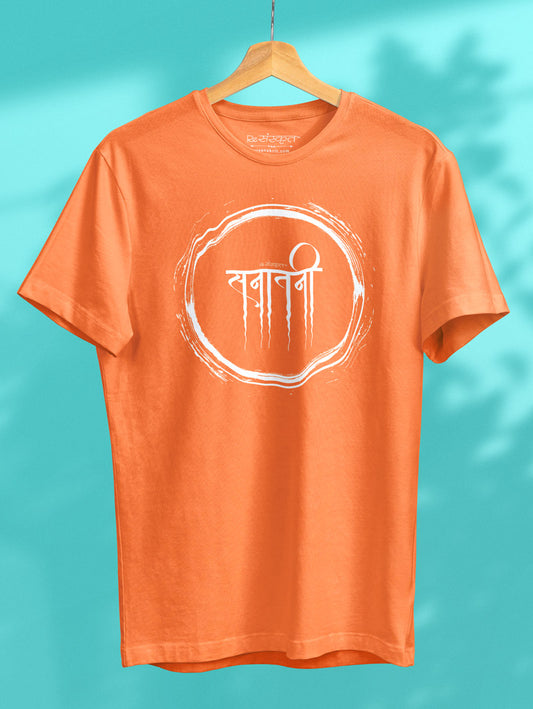

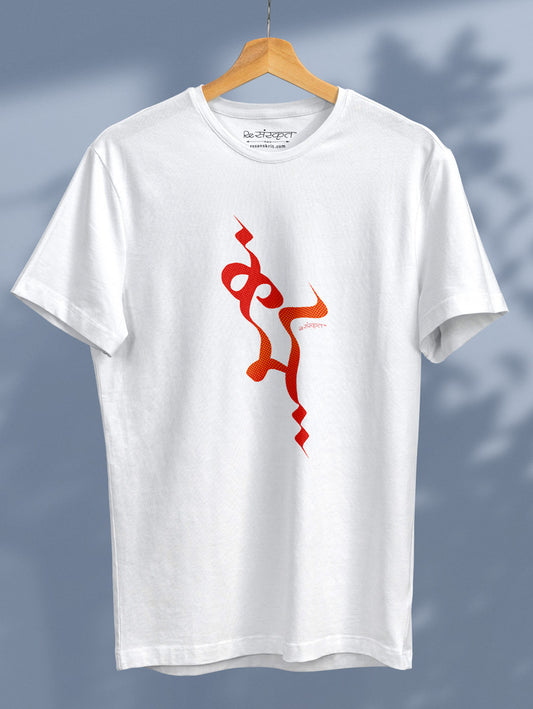
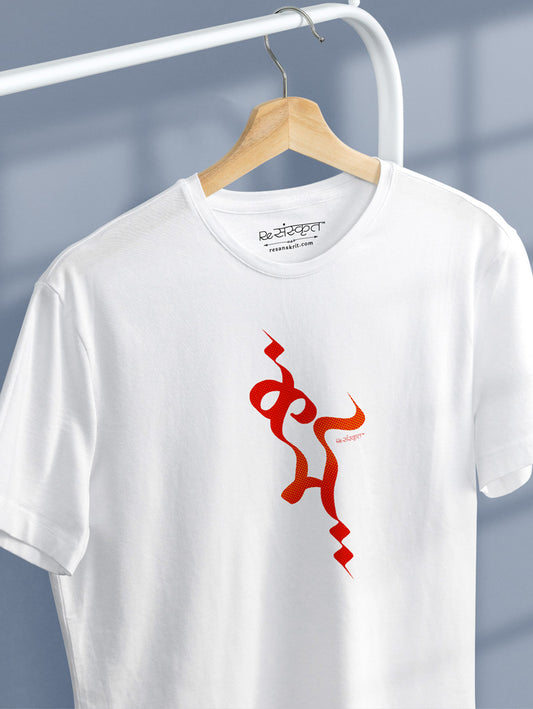
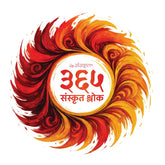
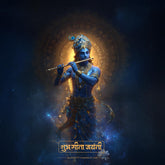
![[Part 2] Relevant Sanskrit Shlokas with Meaning in Hindi & English](http://resanskrit.myshopify.com/cdn/shop/articles/Relevant-Sanskrit-Shlokas-Article-Cover-image-part-2_4499da7e-f9d9-46a6-b615-35f58befb606_165x.jpg?v=1765027232)
Leave a comment
Please note, comments need to be approved before they are published.